We’ve been to many Mayan ruins, both major and minor, from Chichen Itzá to the lonely pyramid sitting square in the middle of some dinky village we happened to be driving through. Of all of them, I think I have to say that Copán is the most beautiful. At the southernmost tip of Mayan territory, it’s nestled among lush tropical greenery, a pleasant walk away from the charming nearby town. The site itself is compact and navigable; there’s no wandering around for hours trying to figure out where in the jungle you are. And, because the stone here is not as soft as the limestone of many other sites, the decorative carvings have stayed crisp and rich.
Copán is known for the beauty and elegance of its sculpture, and is known as both the “Paris of the Mayan world” and the “Athens of the Mayan world,” depending, I suppose, on whether your imagination gravitates more to the ancient or the modern era. In any case, the place is gorgeous.
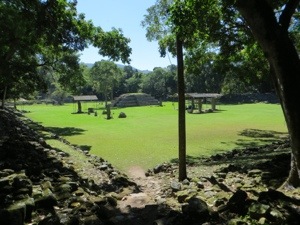
So gorgeous, in fact, that it appears on the Honduran one lempira note (worth about a nickel).
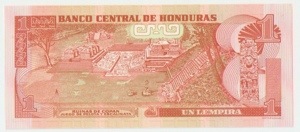
The emblem of the Copán was the macaw, which can be found as a decorative element throughout the city, and as a theme of the archaeological site. A colony of macaws greets you as you enter the ruins.
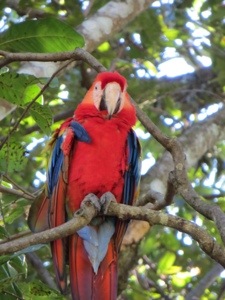
Official guides can be identified by their long staffs topped with a macaw feather, which apparently lie thick on the ground during molting season.
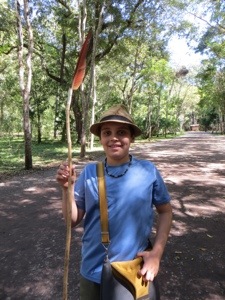
Macaws are carved into many of the buildings and were used as the “goals” in the pelote (ball) court.
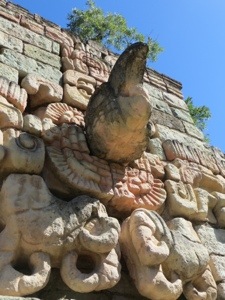
Like most Mayan ruins, Cobán was found in pieces under the jungle growth; the buildings have been reconstructed from the blocks found in situ augmented by modern replacements. Here’s a before and after in the same place, and a stonemason repairing a broken piece.
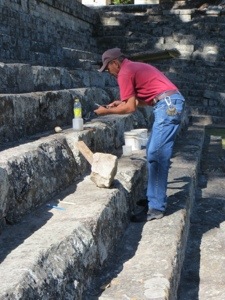
The Hieroglyphic Stairway is the longest inscription in the New World. It has over 1,250 blocks carved with glyphs which are a series of narratives of the reigns of the kings of Cobán, who have wonderful names like “18 Rabbit,” “Smoke Monkey,” and “Waterlily Jaguar.” The carvings are on the risers, so when you stand at the bottom and look up, you see essentially the entire history of the city spread before you. It’s breathtaking.
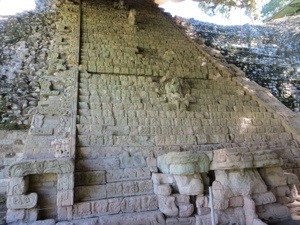
Many of the stelae are left in their original positions, protected by thatched roofs (which are, incidentally, surprisingly watertight). Clearly we were not the first visitors to see this one:
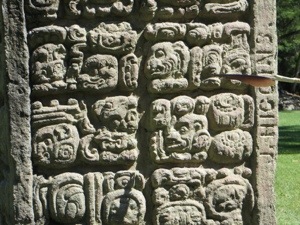
The Mayan pyramids are not hollow, or full of tunnels and tombs like Egyptian pyramids. Succeeding generations built larger, grander pyramids right on top of the older pyramids, encasing them, one after another, like matryoshka dolls. In one of the excavations at Copán, within a later pyramid an earlier building was discovered that still had paint on its exterior. It was called the Rosalila temple, after, as our guide explained, its lovely shades of pink and purple. Exposure to oxygen caused the color to fade, but a reconstruction of it has been built in the museum on the site.
The museum is terrific. It’s built as a courtyard with a covered gallery. In the middle is the reconstruction of the Rosalila pyramid. I’ll let you come to your own opinion about the lovely shades of pink and purple, but the structure is impressive.
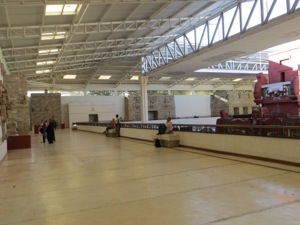
The museum houses many of the sculptures and carvings from buildings throughout the site in order to protect them from the elements. The open structure of the museum is lovely, the fresh air gives one a much better sense of how the carvings would look in situ, and the light inside is perfect. I think it is one of the most pleasant and effective site museums I’ve ever visited.
And the carvings themselves are stunning.

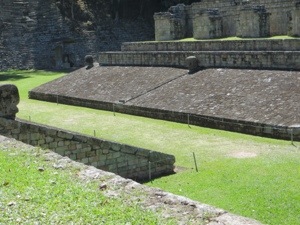
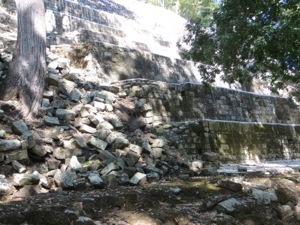
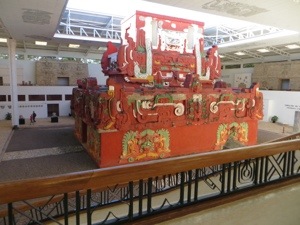
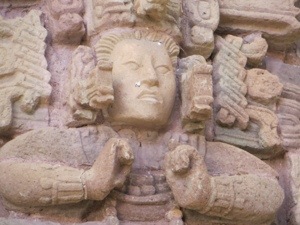
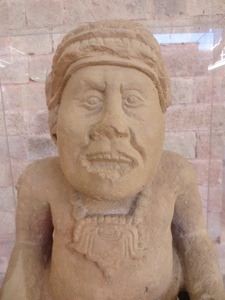
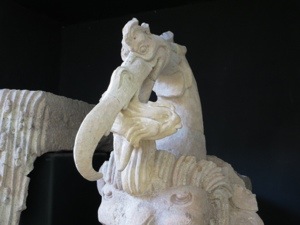
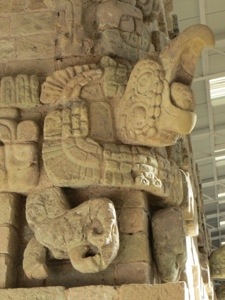

This was particularly fascinating to read and SEE, because one of my favorite students did a huge project on Copan years ago. Some of your pictures were reminiscent of what he found via research. I don’t believe he ever got there, although he had aspirations. Gorgeous entry in every way.
Fascinating! The carvings are wonderful and your description of the ruins and museum would tempt the most reluctant traveler.
Was a wonderful read: Ed and I are definitely going to Peru next fall.
Your writing is vivid and the next best thing to being on the ground there. Just a blockbuster piece! Love and Happy New Year! Dad
HAPPY NEW YEAR 2013!!!
Love & hugs
Joan
Happy New Year! You’ll remember welcoming 2013 amidst the Copan ruins. It was great to hear your voice last night–I tried to call back 8 times to no avail, but it was nice to be in contact, even if just for a minute or two.